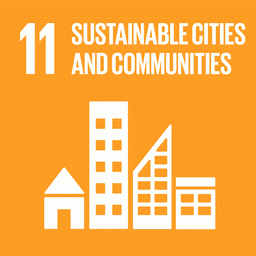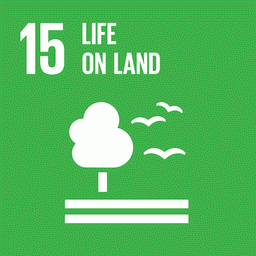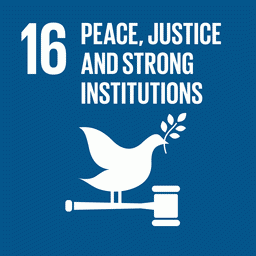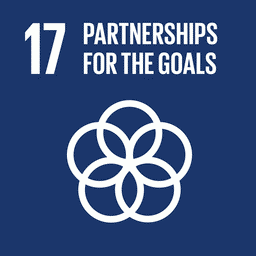The Tô no Mapa app is now integrated with the Traditional Territories Platform of the National Council of Traditional Peoples and Communities (CNPCT), part of the Federal Public Ministry. With this innovation, peoples and communities, in many cases unaccounted for in official maps, can send information about their territories in a more practical manner, in another step towards the legalisation of Traditional Territories in Brazil.
The partnership gives visibility to traditional populations and their territories, contributing to influence legal decisions, protecting territories currently under threat, and the creation of specific public policies. To prevent and mitigate human rights violations, the Traditional Territories Platform issues a certificate attesting whether or not a community is traditional and manages an archive of georeferenced data of areas traditionally occupied by peoples and communities.
“This integration aims to strengthen the mapping of communities and to streamline access to the Traditional Territories Platform. Communities can now be a part of a database whose goal is to prevent human rights violations and assure territorial rights”, says Isabel Castro, Tô no Mapa researcher and project coordinator at the Amazon Environmental Research Institute (IPAM).
Up and running for the last year, Tô no Mapa is a cell phone app that allows for the self-mapping of Traditional Territories by people living in those communities. To achieve that, whenever possible, the communities enjoy help and support from the Tô no Mapa team via training-oriented workshops. 91 territories have already been mapped, occupying an area of almost half a million hectares where more than 10000 families from traditional Brazilian populations live, such as Quilombola, Indigenous, Geraizeiro, Retireiro, small-scale animal husbandry-based communities (“comunidades de fundo e fecho de pasto”, in Portuguese), Babassu coconut-breakers, Vazanteiro, Ribeirinho, Extractivist, in addition to family-scale farmers.
“Seu” Manoel Filho, a teacher, a griot (elder/storyteller) apprentice, and president of the Dona Juscelina Quilombo community (Comunidade Remanescente de Quilombo Dona Juscelina) located in the municipality of Muricilândia, northern Tocantins, was responsible for registering three communities on the Tô no Mapa app: besides his own, he registered the Quilombola communities of Dona Domicília and Dona Eva. “We have been fighting for our territory for more than ten years. Tô no Mapa is a tool to empower the community to help it reach its purposes”, he says. “This is our ancestral territory, even though we don’t [administratively] own it yet. Anything that strengthens the community is a welcome addition”.
Manoel’s community already possesses a Certification from Fundação Palmares, the first step in the process of certifying and recognising a Quilombo, although the process has been waiting for a technical report that sets and identifies the boundaries of quilombola communities (Relatório Técnico de Identificação e Delimitação – RTID) since 2010, to move forward with the territory’s legalisation process.
Interactive map
An interactive map with the location and characteristics of these traditional communities is freely accessible starting from the 25th of January, the date when the second Tô o Mapa report is published, by the Amazon Environmental Research Institute (IPAM), the Institute for Society, Population, and Nature (ISPN), and the Cerrado Network in partnership with Instituto Cerrados.
“The interactive map makes the communities that agreed to publicly disclose their data and participated in the necessary stages to finalise their registration on Tô no Mapa visible. Our goal is to keep it in constant update, aligned with the ebbs and flows characteristic of the socio-biodiversity of Traditional Peoples, Communities, and Family-scale Farmers (PCTAFs), as a tool that can strengthen the communities in their struggles by representing them as part of a network”, says Bruno Tarin, ISPN’s Tô no Mapa governance and engagement technical advisor.
The majority of the 91 territories mapped are in Minas Gerais (23%), Mato Grosso do Sul (19%), Bahia (14%), and Goiás (14%). There are also registered communities located in Maranhão, Mato Grosso, Piauí, and Tocantins. In total, 11 different types/segments of traditional peoples and communities are present, in addition to small-scale family farmers. The most represented are Quilombola (37%), Indigenous (19%), small-scale family farmers (13%), Geraizeiro (2%), Retireiro (1%), and small-scale animal husbandry-based communities (“comunidades de fundo e fecho de pasto”, in Portuguese) (1%).
Land conflicts
The conflicts most commonly signalled by those living in these territories are land invasions and disputes (48%), mainly in Goiás, Maranhão, and Mato Grosso do Sul. Water conflicts (16%) were the second most prevalent, occurring mostly in Tocantins and Minas Gerais, followed by pesticide contamination (13%), whereas uncontrolled prescribed burns stood at 12%, while conflicts connected to “garimpo” (small-scale mining) accounted for 1% of reported conflicts, particularly in the state of Minas Gerais.
Regarding the types of use communities give their territory, “roça” (plots of land used for small-scale, subsistence crops) was the most common (28%), followed by animal husbandry (16%), agroecological production (13%), conservation (10%), extractivism (8%), fishing (3%), and tourism (3%). Also available on Tô no Mapa, the “other uses” category was selected in 19% of cases, citing different territorial uses such as sacred spaces, cemeteries, sports fields, and schools.
“In a universe of 91 territories of self-mapped traditional peoples and communities and small-scale family farmers, 165 conflicts were reported, and it is possible to affirm that in many of these territories there is more than one conflict in progress. The conflict over land, possession and invasions, is still the most reported among the situations of conflict, as a result of the inexistence of state action to guarantee the ownership of the Traditionally Occupied Territories, as well as the total paralysis of the agrarian reform policy”, highlights the anthropologist and executive secretary of Rede Cerrado, Kátia Favilla.
According to her, it is still necessary to carry out more in-depth studies and realize that many of these conflicts are threatening the survival of the territories themselves, such as the indiscriminate use of pesticides, degradation resulting from mining and conflicts over the use of water. “This second report deepens the trend already perceived in the first and presents good indications for actions to guarantee these territories for traditional peoples and communities and small-scale family farmers”, she adds.
Regularisation guide
In addition to the integration with the Traditional Territories Platform, Tô no Mapa introduces the Traditional Territories Formalisation Guide with the launching of its second project report. Drafted by Instituto Cerrados in consultation with the Federal Public Ministry, ISPN, and the Cerrado Network, this document compiles the main information about the formalisation process of a traditional community’s territorial recognition request in an educational manner.
“There are thousands of traditional communities in the Cerrado, a socio-biodiversity to be proud of, get to know, and protect. However, most of them are not formally recognised and face many difficulties, among them those connected to ranching”, states Yuri Salmona, part of the Tô no Mapa project and research at the Instituto Cerrados. “The Traditional Territories Formalisation Guide is an unprecedented document created together with our partners, in which we compile the main guidelines about the different possibilities and a step-by-step plan towards formalising these territories”.
Aiming to prominently contribute to the communities’ struggles to ensure their rights, the guide is shared with community representatives at the beginning of the registration process on the app, and it is now available on the Tô no Mapa website.
Moving forward
Tô no Mapa uses free, open-source development and is under constant improvement to enhance user experience, aiming to guarantee the safety and transparency of the app. Communities also partake in strengthening its protection, for they decide whether or not to publicly disclose information about their territories during the registration process.
For 2022, the initiative is planning new affiliations and enhancements to increase the representativity of communities on Tô no Mapa. Building partnerships with civil society organisations, social movements, and universities is also an important step to deepen analyses of the data collected by the app, to gather evidence about the role played by traditional communities in socio-biodiversity conservation and to increase the safety of their territorial ownership.
Dialogue with representatives of Traditional Peoples, Communities, and Family-scale Farmers remains fundamental to ensure Tô no Mapa keeps on respecting and reflecting their points of view.
About Tô no Mapa
The Tô no Mapa app was launched in October 2020 to fill a gap noticed in official data concerning Traditional Territories in Brazil. A survey conducted by the Amazon Environmental Research Institute (IPAM) and the Institute for Society, Population, and Nature (ISPN) in the area of Matopiba, a region in the Cerrado comprising the states of Maranhão, Tocantins, Piauí, and Bahia, showed the existence of 3,5 times more communities than those accounted for by the competent government authorities.
Through workshops, research, and dialogue with these communities, Tô no Mapa became a tool to self-map and bolster the debates and discussions about territories. The project is being currently funded by Climate and Land Use Alliance and the Good Energies Foundation, with the goal of creating a map that truly reflects the territorial reality of Traditional Peoples, Communities, and Family-scale Farmers around the country.
Tô no Mapa is available on Android and iOs devices.
Access the complete report in english and in portuguese.



